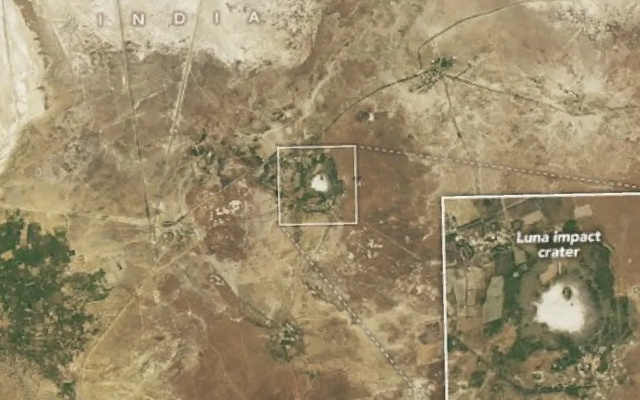A satellite operated by NASA’s Earth Observatory recently captured an image of Luna crater, located in the Kutch region of Gujarat, India. According to a report from the US space agency, a recent analysis of the crater’s geochemistry indicates it was formed by a meteorite impact.
The image of Luna crater was taken by the Operational Land Imager (OLI) on the Landsat 8 satellite on February 24. NASA shared a close-up of the crater on its social media platform X.
View this post on Instagram
Describing the discovery, NASA posted, “You’ve heard of Clair de Lune, but what about Crater de Luna? The #Landsat 8 satellite captured this image of a meteorite impact site—Luna crater—located in India’s Gujarat state in the Banni Plains grassland in February 2024.”
Scientists in India had long suspected that Luna crater was of extraterrestrial origin, but it had not been confirmed until now. The analysis revealed that the crater exhibits the distinctive features typical of meteorite impact sites.
According to NASA, confirmed impact craters on Earth are relatively rare, with fewer than 200 identified worldwide. Many meteorites that survive entry into Earth’s atmosphere land in bodies of water, while those that impact land often have their evidence erased by natural processes such as erosion and tectonic activity.
Describing Luna crater, NASA stated, “The footprint of the newly studied Luna impact crater—named for its proximity to a village of the same name—is visible in this image, acquired by the OLI (Operational Land Imager) on the Landsat 8 satellite on February 24, 2024.” It measures approximately 1.8 kilometers (1.1 miles) in width, with its outer rim rising about 6 meters (20 feet) above the crater floor.
Luna crater is located in the Banni Plains grassland of Gujarat state, near the Great Rann of Kutch salt desert. Parts of the area are submerged for much of the year, and the crater often contains water. Researchers seized a dry period in May 2022 to gather samples from the structure.
NASA concluded by revealing that radiocarbon dating of plant remnants in silt at the site indicates the impact occurred approximately 6,900 years ago. The crater’s proximity to an ancient Harappan settlement raises questions about its possible prehistoric origins, though further research is needed to establish a definitive timeline.
Read More :

















